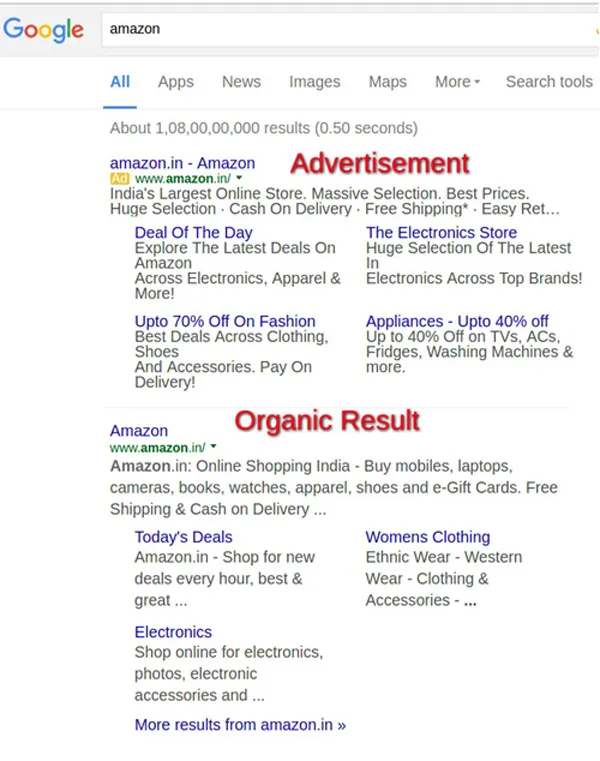What startups can learn from Myntra’s U-turn
Last year, Myntra, one of India’s largest online fashion stores, took the audacious decision to shut down its website and become an app-only store. The rationale given was to provide better user experience. While some of its customers protested, Myntra stuck to its decision. Myntra's parent company, Flipkart, followed suit by turning off its mobile website too.
About nine months later, both Myntra and Flipkart have re-opened their mobile websites, first Flipkart and then Myntra. On June 1st, Myntra will re-launchits desktop site. The reasons mentioned by Myntra include: providing multi-channel access, the need for larger screens for categories like home furnishing, and sizeable desktop traffic.

I have a theory on Myntra's original hypothesis and why it may not have worked out.
On the Internet, most shopping journeys start with a Google search. The reasons are manifold. Google has earned users' trust for locating precisely what they are looking for, sometimes even with ambiguous search queries. And for nearly all queries, Google generates the most relevant ads. For shopping related searches, Google has a modified ad format that shows the picture of the product, its price, and any offers by the given retailer. In short, Google helps users to make better decisions.
Users have come to rely on Google so much that instead of visiting a particular website directly, they just type in the company’s name on Google and expect it to give them a link to the website. This phenomenon is so widespread that brand owners pay Google to show their ads for their own brand name searches. Even the mighty web companies like Amazon pay the Google Tax for searches of its brand, as shown in the screen capture below.

In the e-commerce competition that started earlier this decade, Myntra quickly rose to become India's biggest online shopping destination for apparel and fashion products. Google awarded its popularity by giving Myntra a high ranking in the listing for organic searches and thus more free traffic for Myntra, making it even more popular.
Myntra received tons of traffic from Google for highly competitive and commercial search queries. Google’s ads were also effective in driving users to Myntra with high purchase intention. But when Myntra made the fatal decision to switch off its website, it effectively shut down this source of high quality and, mostly, free traffic to its site. Myntra's bet, probably, was that it had enough mind share and trust of Indian customers that they will remember Myntraas the first destination for fashion products. So no more Google Tax! Myntra probably intended to force shoppers to make a choice –Myntra versus other shopping sites. Inadvertently, however, they forced users to make a choice between Google and Myntra.
A year ago, in May 2015, Google announced that its search traffic on mobile had surpassed desktop traffic. In India, the same inflection point may have been reached earlier, given the country’s relatively low penetration of desktops as compared to mobile.
During its first quarter results, Google announced that the paid clicks in Q1 2016 were 29% higher than in Q1 2015.In other words, Google’s search engine continues to see its usage growing significantly from an already very high base. Just to give you a sense of Google's prowess, in August 2012, Google was performing 100 billion searches per month. No new data about search volume has been published but if you look at Google’s fabulous paid-click growth rates since then, it is safe to say that they have easily doubled that number.
Google's mobile operating system, Android, has over a billion users worldwide. The default search application on Android-powered mobile phones is, well, obviously, Google. In India, Android has over 90% market share of smartphone operating systems.
Google continued to send traffic to Myntra even when its website was shut off. This was due to the good karma that Myntra had earned since its inception. Users searched for products on Google, clicked on Myntra's organic result, and then immediately hit the back button when users saw a note asking them to download the app instead of finding the product that they were looking for. In web analytics parlance, this is called a ‘bounce’. As the number of users bouncing from Myntra's website went up, Google started demoting that result. Gradually, it stops sending traffic altogether to Myntra.
From April 2015, Google publicly stated that its search-ranking algorithm would start giving importance to mobile-friendliness– a decision termed as “Mobilegeddon” in the search community. In March 2016, Google announced that itwas going to place even more importance on sites being mobile friendly. Given that Google still doesn’t have a separate index for mobile, according to the experts, it seems that there is a technical challenge to have a site only for one device and not for others. And how do you classify ‘tablets’, which are another class of devices altogether?
Here we are. Google has a massive search market share, which is growing at a breathtaking pace. Users go to Google with muscle memory, whenever they want something. And Myntra isn't present there. It's entirely possible that the core audience of Myntra open its app whenever they think about fashion. But, on the flip side, there is a huge population that has never purchased anything online yet and coming online for the first time. For those users, Myntra practically doesn't exist, unless they have seen its ads on TV or in print.
Google is ready to hand over all the fashion-related traffic, worth hundreds of crores of rupees annually, to Myntra. For free. All Google asks is that Myntra have a website. And so Myntra is doing just that.
So what can startups learn from Myntra’s blunder?
- First, pay the Google Tax!
- Second, it is important to have both a website and an app for your e-commerce enabled store.
- Third, ensure that your desktop site is friendly for all devices to earn Google’s favour.
Myntra had to learn the above lessons the hard way and probably lost countless millions. Don’t make the same mistake!
(Disclaimer: The views and opinions expressed in this article are those of the author and do not necessarily reflect the views of YourStory.)







![[Startup of the day] How GrocerMax figures out the right unit economics in online grocery retailing](https://images.yourstory.com/cs/wordpress/2016/09/Gaurav-and-Radhakrishnan-from-L-to-R-e1473429752294.jpg?mode=crop&crop=faces&ar=1%3A1&format=auto&w=1920&q=75)